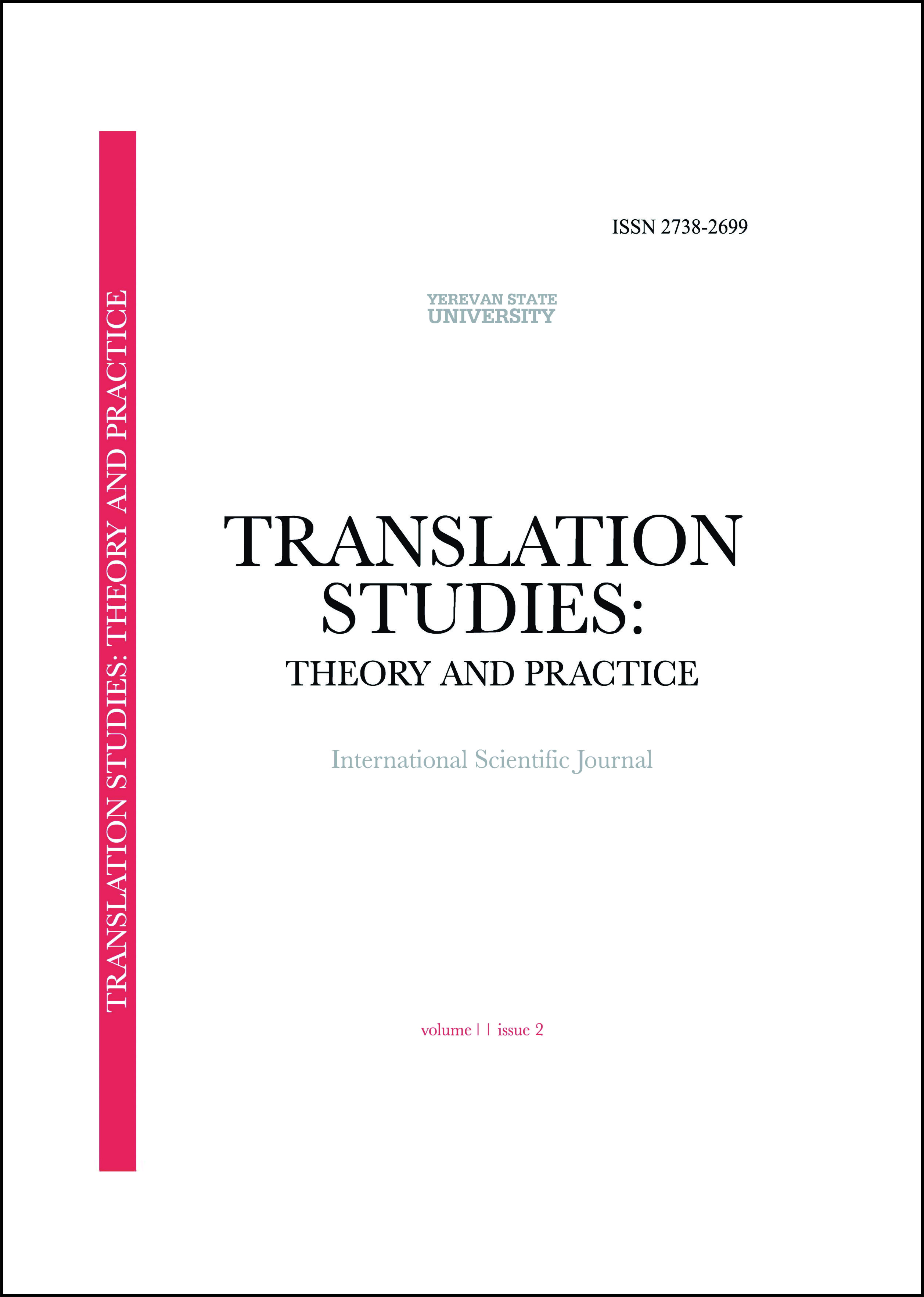Translating Folklore: the Myth of Baba Jaga in Afanasev’s Fairy Tales
DOI:
https://doi.org/10.46991/TSTP/2021.1.2.016Keywords:
translation, fairy tale, Slavic folklore, mythology, translation strategiesAbstract
The main aim of this article is to provide a thorough insight about the difficulties encountered when translating fairy tales from Slavic folklore, in a sense that not only it implies the shift from anoral version to a written one, but also it has to face all the challenges of children’s literature. In order to do this, we have analyzed one of the hundreds of fairy tales present in the work of the Russian writer and linguist Aleksandr Nikolaevič Afanas’ev, Narodnye russkie skazki, an extraordinary collection and classification of a large amount of fairy tales of the Slavic oral culture. Our analysis focuses on the well-known character Baba Jaga, the ‘wooden leg’ witch, who lives in an izbaand rests on hen’s legs in an enchanted wood. In particular, an attempt is made to conduct a translatological analysis of Afanas’ev’s text, within the framework of textual typology considering the translation macro-strategy, the most significant linguistic factors, as well assome potential translation strategies which help the story to fit in the target language and culture in the best possible way.
References
Afanasʼev, Aleksandr Nikolaevič. (1873). Narodnye russkie skazki. Moskva: Soldatenkov.
Carmignani, Ilde. 2019. "Il mestiere del traduttore secondo Ilide Carmignani: 'tradurre significa far incontrare due realtà, due modi di guardare e sentire il mondo'". WeCanJob. URL: https://www.wecanjob.it/archivio21_il-mestiere-del-traduttore-intervista-a-ilidecarmignani_0_316.html.
Johansen, Helene. 2018. La traduzione degli elementi culturali nella letteratura per bambini, OSLa, vol. 10 (1). https://doi.org/10.5617/osla.6043
Klingberg, Gunilla. 1986. "Children's Fiction in the Hands of the Translators." Studia Psychologica et Paedagogica. H. Johansen (trans.), Series altera 82, pp. 11-18. In H. Johansen. 2018. La traduzione degli elementi culturali nella letteratura per bambini, OSLa, Vol. 10 (1). https://doi.org/10.5617/osla.6043
Kramsch, Claire. 2006. "Culture in Language Teaching." In K. Lund, H. L. Andersen & K. Risager. Culture in Language Learning. Aarhus: Aarhus University Press, pp. 13, 25-36.
Morini, Massimiliano. 2007. La traduzione. Teorie, strumenti, pratiche. Milano: Sironi editore, p. 225.
Newmark, Paul. 1995. La traduzione: problemi e metod. F. Frangini (trans.). Milano: Garzanti Libri, p. 79.
Nikolajeva, Maria. 2006. "Children's Literature Comes of Age: Toward a New Aesthetic." Children's Literature And Culture, Vol.1. New York: Garland, p. 47.
Osimo, Bruno. 2011. Manuale del traduttore. Terza edizione. Hoepli, p. 112.
Osimo, Bruno. 2014. "Corso di traduzione." In H. Johansen (cit.), La traduzione degli elementi culturali nella letteratura per bambini. OSLa, Vol. 10 (1), 2018. https://doi.org/10.5617/osla.6043
Palchevska, Olexandra. 2019. Translation Peculiarities of the XIXth Century Folk Texts Culturally Marked Vocabulary. p. 73. https://doi.org/10.36059/978-966-397-149-0/73-88
Riitta, Oittinen. 2006. "No Innocent Act: On the Ethics of Translating for Children." In Children's Literature Translation. Challenges and Strategies. J. Van Coillie; W. P. Verschueren, Routledge (eds). Manchester: St. Jerome.
Rurangwa, Narcisse. 2005. "Folklore, Culture, Language and Translation." In Translating Rwandan folktales into English: a Culture-Based Analysis. Johannesburg, p. 16.
Salviati, Carla Ida. 2003. "Raccontare destini. La fiaba come materia prima dell'immaginario." In Letteratura per l'infanzia. Ambiti, caratteristiche, tematiche (S.B. Picherle). Verona: Libreria Editrice Universitaria.
Venturi, Gigliola (trans.). 1953. Afanasjev. Antiche fiabe russe. Torino: Giulio Einaudi Editore.
Downloads
Published
How to Cite
Issue
Section
License
Copyright (c) 2021 Caterina Neri

This work is licensed under a Creative Commons Attribution-NonCommercial 4.0 International License.










